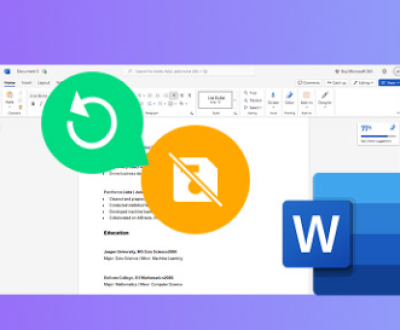Retrieving a crashed Cakewalk file can be a daunting task, especially if you’re not familiar with the recovery process.
Cakewalk and File Structure
Cakewalk is a popular digital audio workstation (DAW) used for music production. When you create a project in Cakewalk, it generates various files, including:
Project File (.cwp): The main file containing your project data.
Audio Files: Any audio clips you import or record.
MIDI Files: MIDI data for virtual instruments.
Backup Files: Automatic backups created by Cakewalk to prevent data loss.

Common Causes of Crashes
Before diving into recovery methods, it’s crucial to understand why your Cakewalk project may have crashed:
Insufficient System Resources: Running too many plugins or processes can overwhelm your CPU or RAM.
Corrupted Project Files: Files may become corrupted due to abrupt shutdowns or software bugs.
Outdated Software: Running an outdated version of Cakewalk or plugins can lead to compatibility issues.
Hardware Failures: Issues with your hard drive or RAM can cause crashes.
Step-by-Step Recovery Process
Step 1: Check for Auto-Save and Backup Files
Cakewalk has an auto-save feature that may have saved a backup of your project before the crash. To locate these files:
Open the Backup Folder:
Navigate to the folder where your project is stored.
Look for a subfolder named “Backup” or check the location specified in Cakewalk’s settings.
Identify Backup Files:
Look for files with a .cwp extension and a timestamp close to when you last worked on the project.
Restore from Backup:
Open the backup file in Cakewalk to see if it contains your recent work.
Step 2: Use the Crash Recovery Feature
If Cakewalk crashed while you were working, the software may prompt you to recover your last session upon reopening.
Restart Cakewalk:
After the crash, open Cakewalk again.
If a recovery dialog appears, follow the prompts to restore your session.
Check Recovery Files:
Navigate to the Cakewalk installation directory to find a folder named “Crash” or similar.
Look for any recovery files that may have been generated.
Step 3: Manually Recover Audio Files
If the project file is corrupted and unrecoverable, you may still salvage individual audio files.
Locate Audio Files:
In the project folder, find any subfolders labeled “Audio” or “Recorded Files.”
Copy these files to a safe location.
Create a New Project:
Open Cakewalk and create a new project.
Import the recovered audio files into this new project.
Recreate MIDI and Effects:
Unfortunately, you will need to reconfigure any MIDI tracks and effects since they are tied to the project file.
Step 4: Utilize Third-Party Recovery Software
If you cannot retrieve your project through the methods mentioned above, consider using data recovery software.
Select a Recovery Tool:
Popular options include Recuva, EaseUS Data Recovery Wizard, and Disk Drill.
Run the Recovery Software:
Install the chosen software and scan the hard drive where your Cakewalk project was stored.
Follow the software instructions to recover lost files.
Save Recovered Files:
Save any recovered files to a different drive to prevent overwriting the original data.
Preventing Future Crashes
To minimize the risk of future crashes, consider the following tips:
Regularly Save Your Work:
Use the “Save” and “Save As” options frequently to create multiple versions of your project.
Utilize Auto-Save Features:
Check Cakewalk’s settings to ensure auto-save is enabled and set to a suitable interval.
Keep Software Updated:
Regularly update Cakewalk and your plugins to ensure compatibility and performance.
Optimize System Performance:
Close unnecessary applications while working in Cakewalk.
Consider upgrading your hardware if you frequently experience crashes.
Backup Your Projects:
Use cloud storage or external drives to create backups of your projects.
About us and this blog
Panda Assistant is built on the latest data recovery algorithms, ensuring that no file is too damaged, too lost, or too corrupted to be recovered.
Request a free quote
We believe that data recovery shouldn’t be a daunting task. That’s why we’ve designed Panda Assistant to be as easy to use as it is powerful. With a few clicks, you can initiate a scan, preview recoverable files, and restore your data all within a matter of minutes.
Subscribe to our newsletter!
More from our blog
See all postsRecent Posts
- How to recover lost files on sd card 2025-07-18
- How do i recover a lost document in word 2025-07-18
- How to recover lost files on windows 10 2025-07-18

 Try lt Free
Try lt Free Recovery success rate of up to
Recovery success rate of up to









